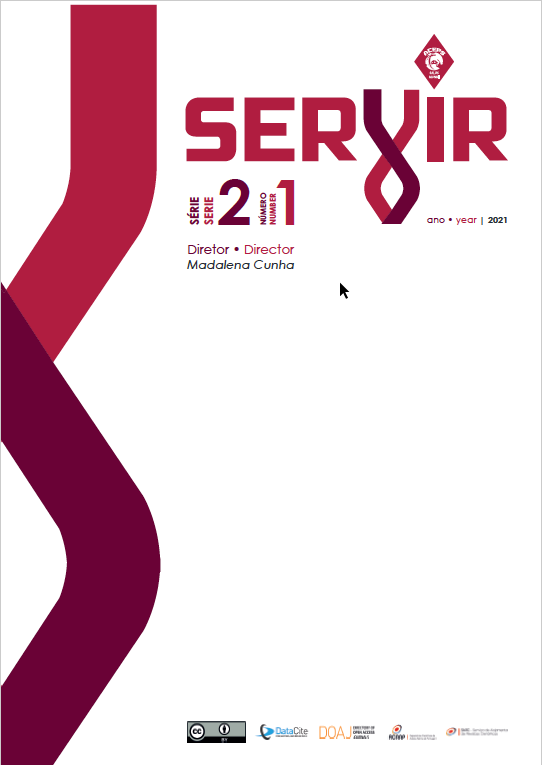The emerging patient in the emergency department: stratification
stratification of clinical risk
DOI:
https://doi.org/10.48492/servir0201.25679Keywords:
emerging, risk, emergency serviceAbstract
Introduction: The Emergency Department attendance increase leads to the need to implement an effective process in the management of healthcare foremerging patients. The triage system prevails, as an answer to this problem. It is an instrument that establishes the clinical priority of care for the first medicalobservation and, in this way, promotes the management of clinical risk and equity in access to the Emergency Service.
Objective: To determine the most prevalent clinical risk level in emerging priority clients.
Methods: Descriptive study, with a retrospective cohort, carried out in patients who were screened with emerging clinical priority upon admission to the emergency department, in which 52.7% of the sample was male. Data were collected by consulting the Alert® Information System of a hospital in the Center region of Portugal.
Results: The prevailing clinical risk level for males was 10 (ten) and 7 (seven) for females. It was observed that 61.9% of clients with clinical risk belong to the age group greater than or equal to 71 years. The factors: age less than or equal to 70 years (OR=0.422), length of stay in the emergency room less than or equal to 120 minutes and between 120 and 240 minutes, and the shortest medical observation time (1 to 10 minutes), represented a decrease in clinical risk of 57.8%, 94.7%, 67.7% and 72.9%, respectively. On the other hand, a stay longer than 240 minutes represented an increase in the risk index of 152.8%. The odds ratio of the occurrence of cardiopulmonary resuscitation maneuvers (OR=0.333) decreases to 66.7% the risk level when they are not performed.
Conclusion: The variables male gender, age over 70 years and length of stay proved to be determinants of clinical risk, which is why it is important to considerthem when managing emergent treatment in the emergency department.
Downloads
References
Coutinho, A.A.P., Cecílio, L.C.O., & Mota, J.A.C. (2012). Classificação de risco em serviços de emergência: uma discussão da literatura sobre o Sistema de Triagem de Manchester. Rev Med Minas Gerais; 22(2), 188-198. Acedido em http://rmmg.org/artigo/detalhes/101
GrupoPortuguêsdeTriagem(2017).ProtocolodeTriagemdeManchester.Acedidoemhttp://www.grupoportuguestriagem.pt/index.php?option=com_content&view=article&id=3&Itemid=109
Júnior, J.A., & Matsuda, L.M. (2012). Implantação do sistema acolhimento com Classificação e Avaliação de Risco e uso do Fluxograma Analisador. Texto 95 Contexto Enferm.; 21(1):217-25. Acedido em doi.org/10.1590/S0104-07072012000100025.
Lopes J.B. (2011). Enfermeiro na classificação de risco em serviços de emergência: revisão integrativa. Porto alegre: Faculdade de Enfermagem, Universidade Federal do Rio Grande do Sul. Porto Alegre; 36 f. Acedido em http://www.lume.ufrgs.br/andle/10183/37529.
Oliveira, P., Frutuoso, B., Veríssimo, R., & Agripino, A. (2017). O Doente Idoso no Serviço de Urgência. Galicia Clin; 78 (1), 11-14. Acedido em https://galiciaclinica.info/PDF/43/1055.pdf
Oredsson. S., Jonsson, H., Rognes, J., Lind, L., Göransson, K.E., Ehrenberg, A. et al. (2011). A systematic review of triage-related interventions to improve patient flow in emergency departments Scandinavian Journal of Trauma, Resuscitation and Emergency medicine. BioMed Central Ltd; 19(1), 43. Acedido em http://www.pubmedcentral.nih.gov/articlerender.fcgi?artid=3152510&tool=pmcentrez&rendetype=abstract
Santos, E., Cardoso, D., Queirós, P., Cunha, M., Rodrigues, M., Apóstolo, J. (2016). The effects of emergency department overcrowding on admitted patient outcomes: a systematic review protocol”, JBI Database of Systematic Reviews and Implementation Reports 14, 5: 96-102. doi: 10.11124/JBISRIR-2016-002562
Souza, C. C., Araújo, F. A., & Chianca, T. C. (2015). Produção científica sobre a validade e confiabilidade do Protocolo de Manchester: revisão integrativa da literatura. Revista da Escola de Enfermagem da USP, pp. 144-151. Obtido de Produção científica sobre a validade e confiabilidade do Protocolo de Manchester: revisão integrativa da literatura. Acedido em http://dx.doi.org/10.1590/S0080-623420150000100019
Veríssimo, O.M.T. (2018). O nível de satisfação das pessoas com a abordagem dos enfermeiros no processo de triagem e fatores que o influenciam. (Dissertação de Mrestrado). Escola Superior de Enfermagem de Coimbra. Acedido em https://repositorio.esenfc.pt/private/index.php?process=download&id=57753.
Vieira, A.C., Bertoncello, K.C.G., Girondi, J.B.R., Nascimento, L.R.P., Hammerschmidt, K.S.A. & Zefeino, M.T. (2016). Percepção dos enfermeiros de emergência na utilização de um protocolo para avaliação da dor torácica. Texto Contexto Enferm; 25(1):e1830014.
Downloads
Published
How to Cite
Issue
Section
License
In order to promote the free circulation of knowledge, Servir is open access journal. All its content is available and protected under the Creative Commons license (CC BY 4.0).
The journal allows self-archiving in institutional repositories of all versions, which may become immediately available


